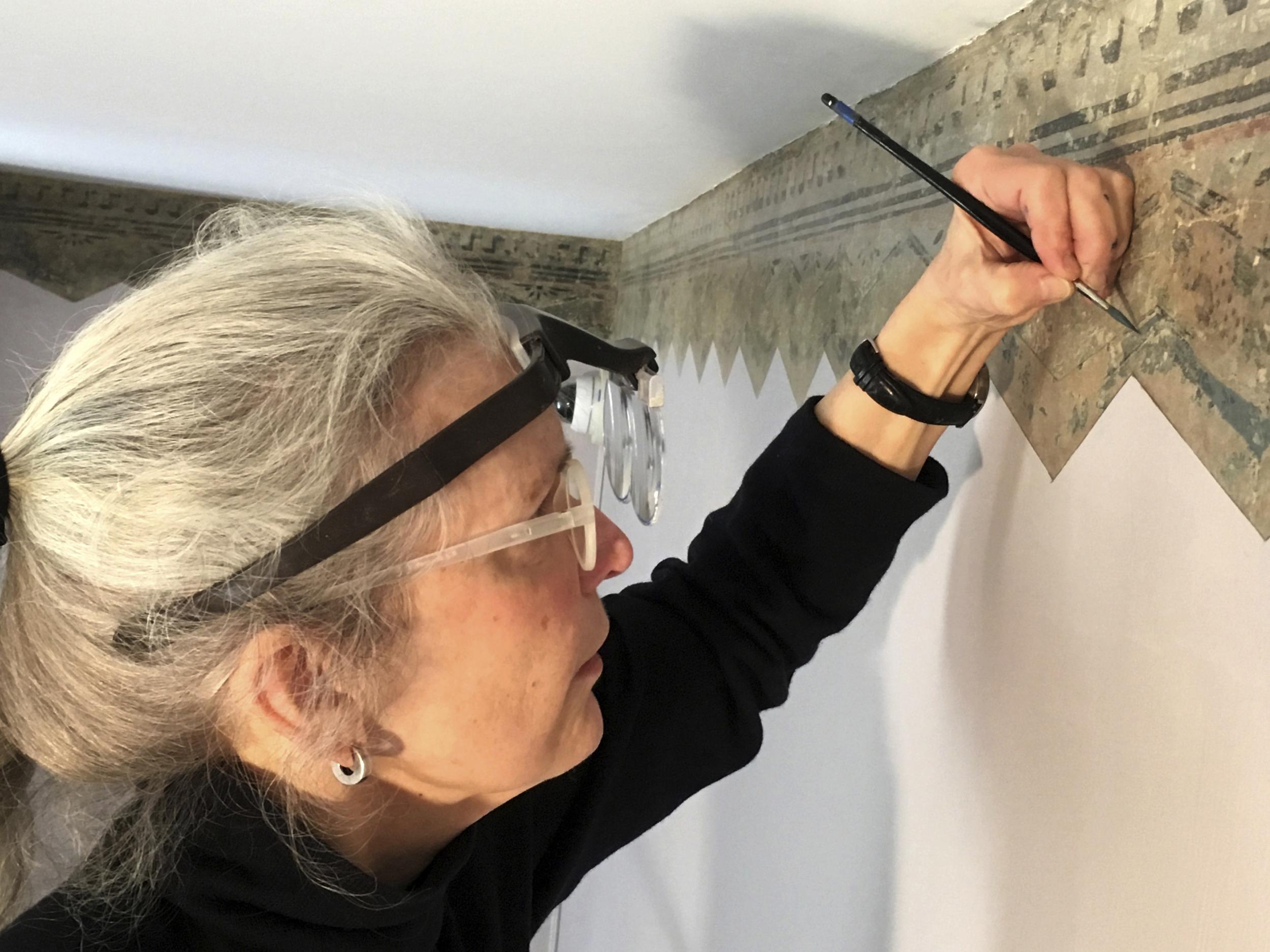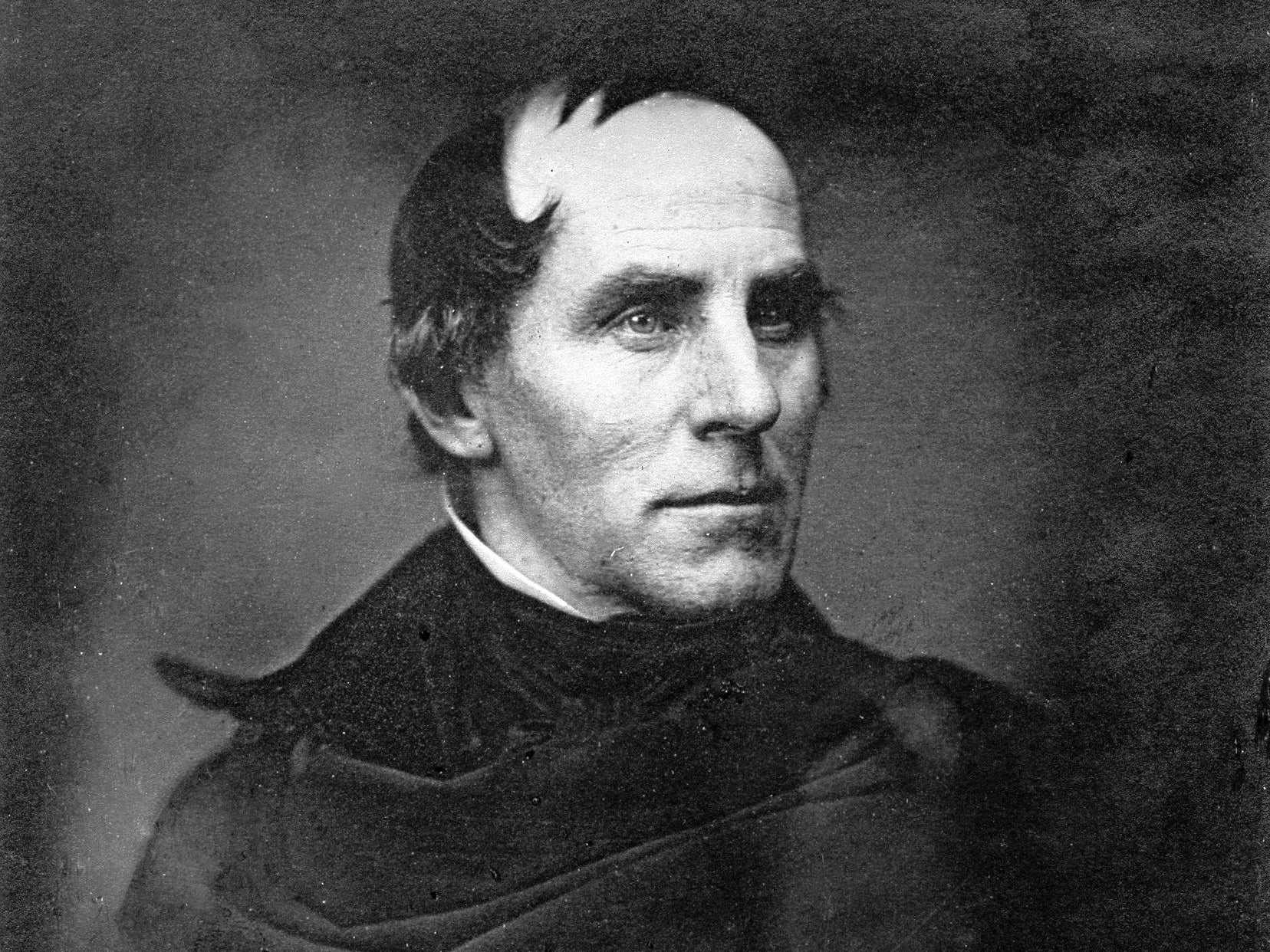Thomas Cole murals uncovered on walls of Catskills home in New York state
Patterned borders by influential 19th century father of Hudson River School uncovered thanks to meticulous restoration work

Your support helps us to tell the story
From reproductive rights to climate change to Big Tech, The Independent is on the ground when the story is developing. Whether it's investigating the financials of Elon Musk's pro-Trump PAC or producing our latest documentary, 'The A Word', which shines a light on the American women fighting for reproductive rights, we know how important it is to parse out the facts from the messaging.
At such a critical moment in US history, we need reporters on the ground. Your donation allows us to keep sending journalists to speak to both sides of the story.
The Independent is trusted by Americans across the entire political spectrum. And unlike many other quality news outlets, we choose not to lock Americans out of our reporting and analysis with paywalls. We believe quality journalism should be available to everyone, paid for by those who can afford it.
Your support makes all the difference.Not only did Thomas Cole paint the lush mountain landscapes that inspired the Hudson River School art movement of the 19th century, he also painted on the walls of his home.
Lost beneath layers of paint for more than a century, the patterned borders below the ceilings were rediscovered several years ago and are now revealed in their semi-faded glory.
The stylised depictions of drapery and fabric, painstakingly recovered by conservators, will be fully displayed when the Thomas Cole National Historic Site opens for the season in May. While not exactly lost masterworks, they offer new insight into one of America's most influential painters.
“His choice of designs... are his way of expressing his personality, the way he wanted people to see him and the way he wanted people to see his art,” said Elizabeth Jacks, executive director of the site. “It tells us a lot of what was going on in the mind of this person at the time in his life when he was creating these incredible art works.”
Cole is believed to have painted the borders around the time he moved into the house in 1836 to provide a sort of frame for paintings displayed on the parlour walls. One sunny parlour features abstract folds of a fabric in blue and green; the other features a more elaborate pattern depicting drapery swags.

While Cole did not sign his name on the walls, there's evidence of the master's hand.
Cole had experience making designs on fabric and wallpaper and had been impressed with the ornate Roman wall decorations he saw on a tour of Pompeii and Herculaneum. A then-rare ultramarine blue pigment points to a painter of Cole's stature. And there are no records of payments made for the work among the household's meticulous financial records.
Cole died in 1848 at age 47, though the home in this village 100 miles north of New York City remained with the family for more than a century. At some point, no one knows exactly why, the border art was covered up by wallpaper and then layers of paint. One parlour had successive coats of green, cream, dark green, light blue, periwinkle and more.
The lost art was discovered after historic paint expert Matthew J. Mosca in 2014 examined a bit of what looked like exposed wallpaper up high in a pantry. A closer look revealed it was a painted design.
“When I got up on a ladder and looked at it, I thought, 'Oh my God,”' he recalled.

The discovery in the parlours followed, and Mosca and art restorer Margaret Saliske began carefully removing decades of wall paint with scalpels and solvent.
Saliske finished uncovering the designs this winter and took up a fine-tipped paint brush for the delicate restoration works. High on a scaffold, she spent a recent morning dabbing in paint where the original work is missing, careful never to overlap Cole's work.
“I'll circle around and bump up against the edge with my colour,” she said, “but I'm honouring every little piece of paint.”
She matched colour by eye, mixing paint and ground pigment to get exactly the right intensity and transparency.
Saliske has restored about 5 feet of one border in one parlour and the site is seeking grant money to restore more. The goal is to fully restore three of the four walls in each parlour, giving visitors a sense of both the discovered work and what the walls looked like 180 years ago when Cole gazed at the forested mountains outside his windows.
AP
Join our commenting forum
Join thought-provoking conversations, follow other Independent readers and see their replies
Comments